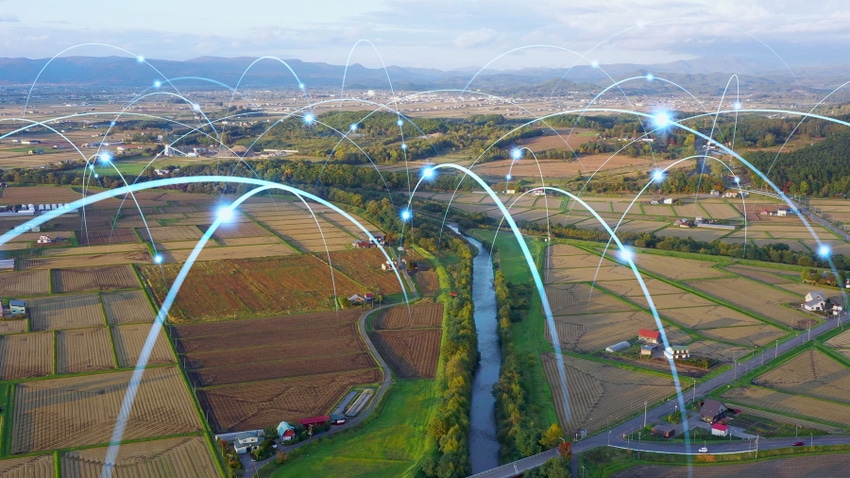March 2, 2023

Talk of the urban-rural divide in internet connectivity can sometimes feel esoteric, with terms like “latency” and “download speed” confusing the issue. But as automation and autonomy move toward greater reality in agriculture, that connectivity challenge will become more apparent. I talked recently with Crystal Wells, manager of Tech Stack Architecture for John Deere, about the challenge and opportunity of connectivity.
During the conversation, we discussed the John Deere tech stack, a term you’ve likely heard a little more of, but Wells noted that a farmer needs not know what the term means.
“I hope what [the farmer] sees, though, is the value that comes out of the tech stack,” she noted. “It’s all of the things that we’re able to do with that technology that we either put on the machine or in the cloud in order to make sure he’s got the best productivity we can find.”
A key to that tech stack, however, is connectivity. The over-the-air sharing of key data from machine to cloud and back is evolving. Today, some key functions don’t rely on direct connectivity to work. For example, the See & Spray Ultimate sprayer does not need a web connection to do its work. All the sense-and-act technology is already at work on the machine. It’s a term called “edge computing” because all the computer thinking to identify a crop from a weed happens on the machine.
However, having access to the cloud for key tasks could build on what any machine in the field does, and this is true for all other brands’ tech stacks. Connectivity matters.
It’s about latency
“Connectivity is a huge part of our system today,” Wells said. “We already know that our farmers are using connectivity today to be able to make faster real-time decisions — like estimated field time to completion, a newer feature we just released.”
That time-to-completion feature is a logistics planning tool that lets farmers know when machines can move and determine where they should work next. It’s made possible by telemetry from each machine while at work, relying on a backbone of connectivity. But could connectivity get fast enough for autonomy?
Another connectivity tool, that many farmers may already take for granted is remote display access. The ability may now just be expected for a tech support person from your local dealer to log in and see your display to help diagnose a problem. But quality connectivity matters for that service, too.
“As we look toward autonomy, there is so much of the computing that is always going to happen on the machine,” Wells said, adding that computing power in the cloud, however, has value to make more complex decisions.
The challenge is latency — a measure of the time it takes for data to move from one place to another. For example, how fast does an image from a machine in the field move to the cloud where weed or disease identification can be made, and then sent back to a machine as part of a task in the field? That latency means for now that the heavy lifting must happen on the machine, as it does on the See & Spray Ultimate, where onboard computers linked to cameras decide when to spray.
Better high-speed connectivity will enable more detailed benefits in the future, but the broadband network available in the country today is neither reliable enough nor widely available to fill this need.
Keeping connected
Even autonomous machines with edge computing may need to be connected to the cloud. If the machine encounters an obstacle, it must report back to its controller — no matter where — to report why it stopped. Connectivity will allow the operator to see the problem and solve it without the need to drive back to the machine to keep it moving.
“If we can assure connectivity, that gives the farmer peace of mind that he won’t have to go back up to that machine,” Wells said. “It’s super frustrating to farmers when they know the barrier is not the technology that exists to drive the machine, but simply the connectivity to make it all come together.”
John Deere and its competitors are allied on one task: to promote the continued need to expand broadband access to more remote areas. With more infrastructure money coming from Washington, perhaps a local push can get the ball rolling for more places. To advance the latest ag tech, connectivity will be critical.
About the Author(s)
You May Also Like






